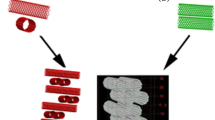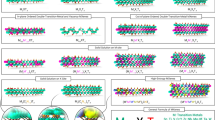Abstract
We have analyzed the effect of external electric field on the zigzag (6,0) single-wall BC2N nanotube using density functional theory calculations. Analysis of the structural parameters indicates that the nanotube is resistant against the external electric field strengths. Analysis of the electronic structure of the nanotube indicates that the applied parallel electric field strengths have a much stronger interaction with the nanotube with respect to the transverse electric field strengths and the nanotube is easier to modulate by the applied parallel electric field. Our results show that the properties of the nanotube can be controlled by the proper external electric field for use in nano-electronic circuits.

Three-dimensional (3D) views of the (6,0) zigzag BC2N nanotube under electric field effect






Similar content being viewed by others
References
Ijima S (1991) Nature 354:56–58
Politzer P, Murray Jane S, Lane P, Concha Monica C, Jin P, Peralta-Inga Z (2005) J Mol Model 11:258–264
Ma F, Zhou ZJ, Li ZR, Wu D, Li Y, Li ZS (2010) Chem Phys Lett 488:182–186
Zurek B, Autschbach J (2004) J Am Chem Soc 126:13079–13088
Nojeh A, Lakatos GW, Peng S, Cho K, Pease RFW (2003) Nano Lett 3:1187–1190
Wang WL, Bai XD, Liu KH, Xu Z, Golberg D, Bando Y, Wang EG (2006) J Am Chem Soc 128:6530–6531
Liao L, Liu K, Wang W, Bai X, Wang E, Liu Y, Li J, Liu C (2007) J Am Chem Soc 129:9562–9563
Enouz S, Stéphan O, Cochon JL, Colliex C, Loiseau A (2007) Nano Lett 7:1856–1862
Rossato J, Baierle RJ (2007) Phys Rev B 75:235401–235407
Pan H, Feng YP, Lin JY (2006) Phys Rev B 73:035420–035425
Hernndez E, Goze C, Bernier P, Rubio A (1998) Phys Rev Lett 80:4502–4505
Zhou Z, Zhao J, Gao X, Chen Z, Yan J, Schleyer PvR, Morinaga M (2005) Chem Mater 17:992–1000
Peng S, Cho K (2003) Nano Lett 3:513–517
Khoo KH, Mazzoni MSC, Louie SG (2004) Phys Rev B 69:201401(R)
Guo GY, Ishibashi S, Tamura T, Terakura K (2007) Phys Rev B 75:245403–245419
Attaccalite C, Wirtz L, Marini A, Rubio A (2007) Phys Status Solid B 244:4288–4292
Baei MT, Ahmadi Peyghan A, Moghimi M (2012) J Mol Model. doi:10.1007/s00894-012-1440-1
Sabzyan H, Farmanzadeh D (2007) J Comput Chem 28:923–931
Schmidt M et al. (1993) J Comput Chem 14:1347–1363
Author information
Authors and Affiliations
Corresponding author
Rights and permissions
About this article
Cite this article
Baei, M.T., Peyghan, A.A., Moghimi, M. et al. Electric field effect on the zigzag (6,0) single-wall BC2N nanotube for use in nano-electronic circuits. J Mol Model 19, 97–107 (2013). https://doi.org/10.1007/s00894-012-1526-9
Received:
Accepted:
Published:
Issue Date:
DOI: https://doi.org/10.1007/s00894-012-1526-9




